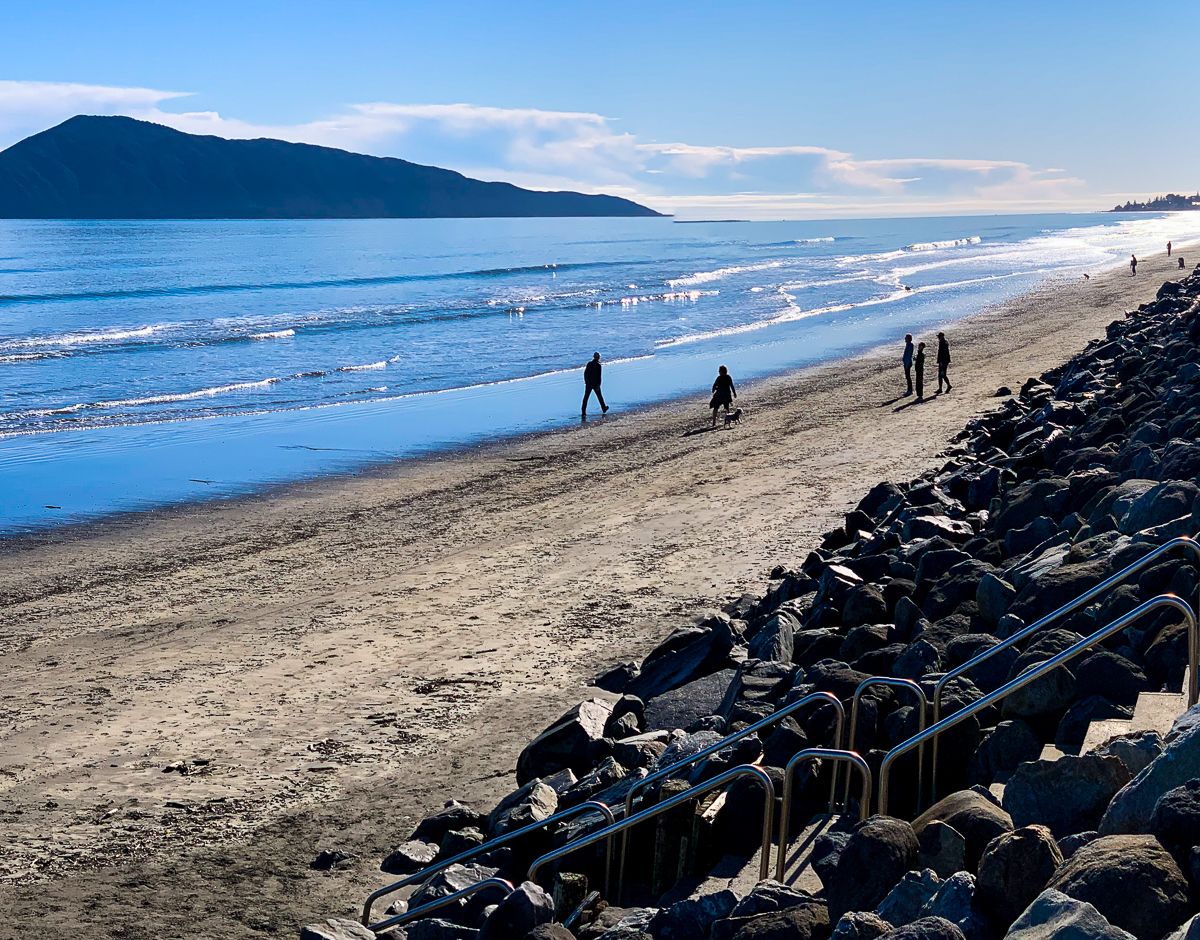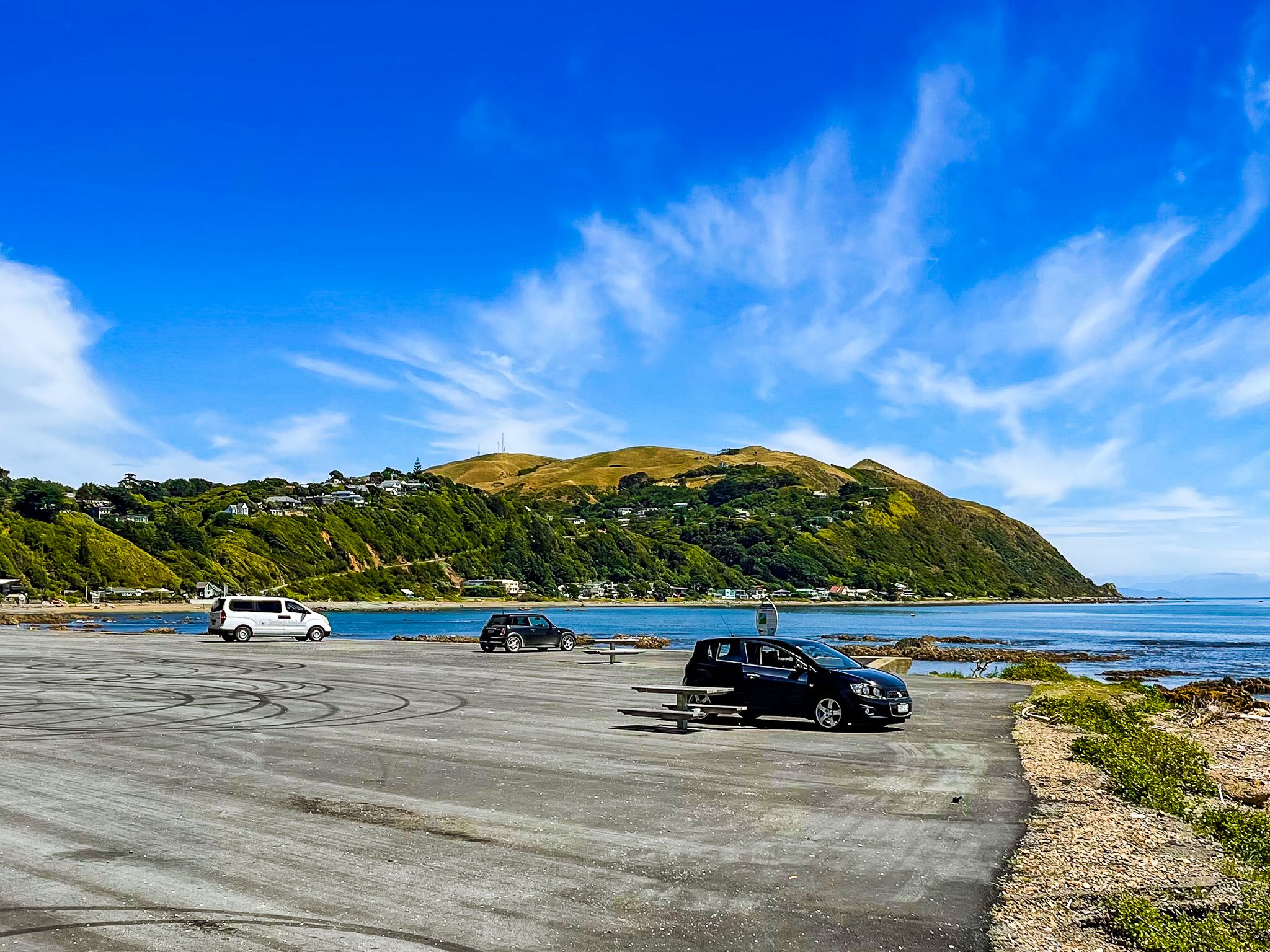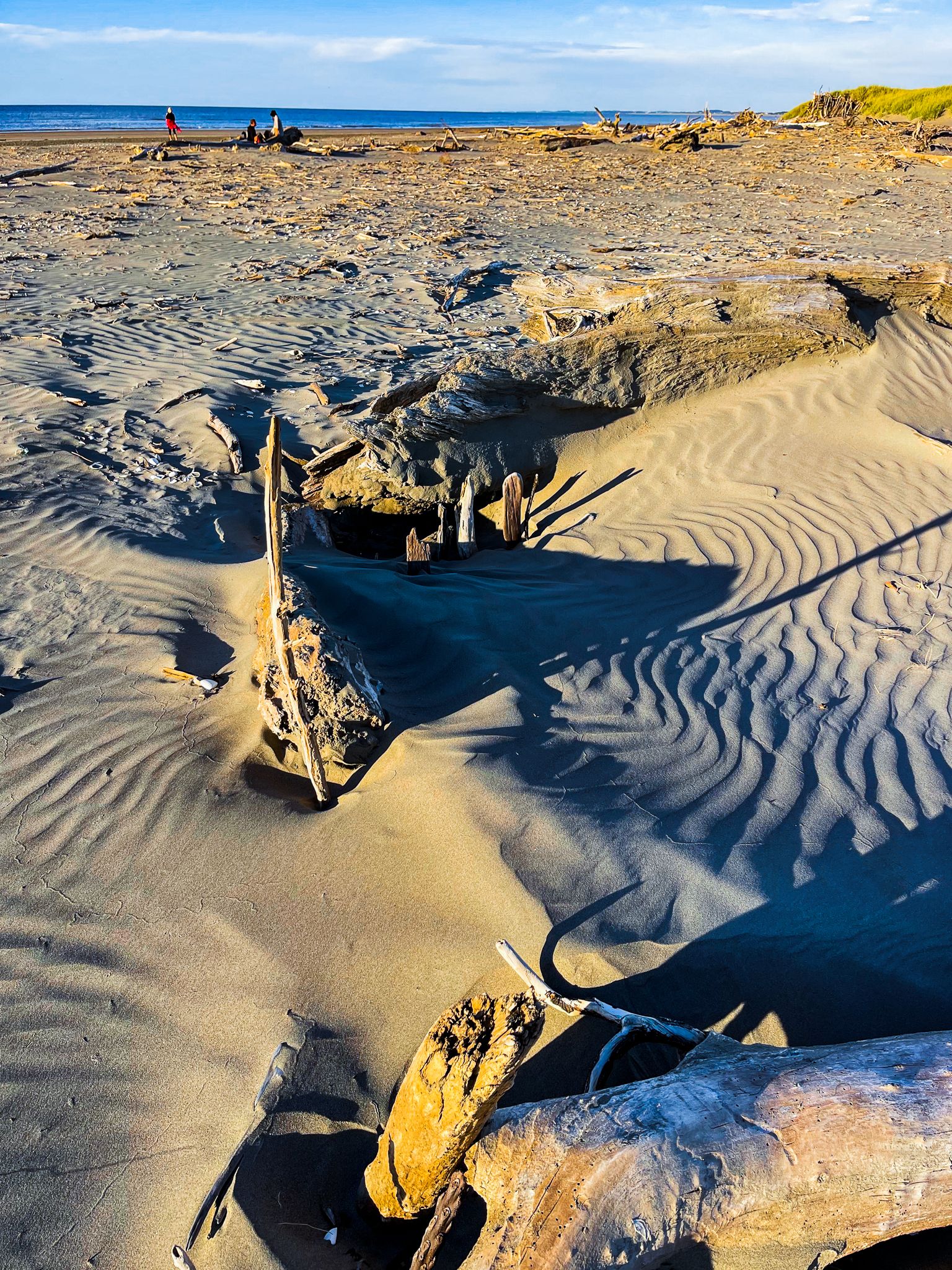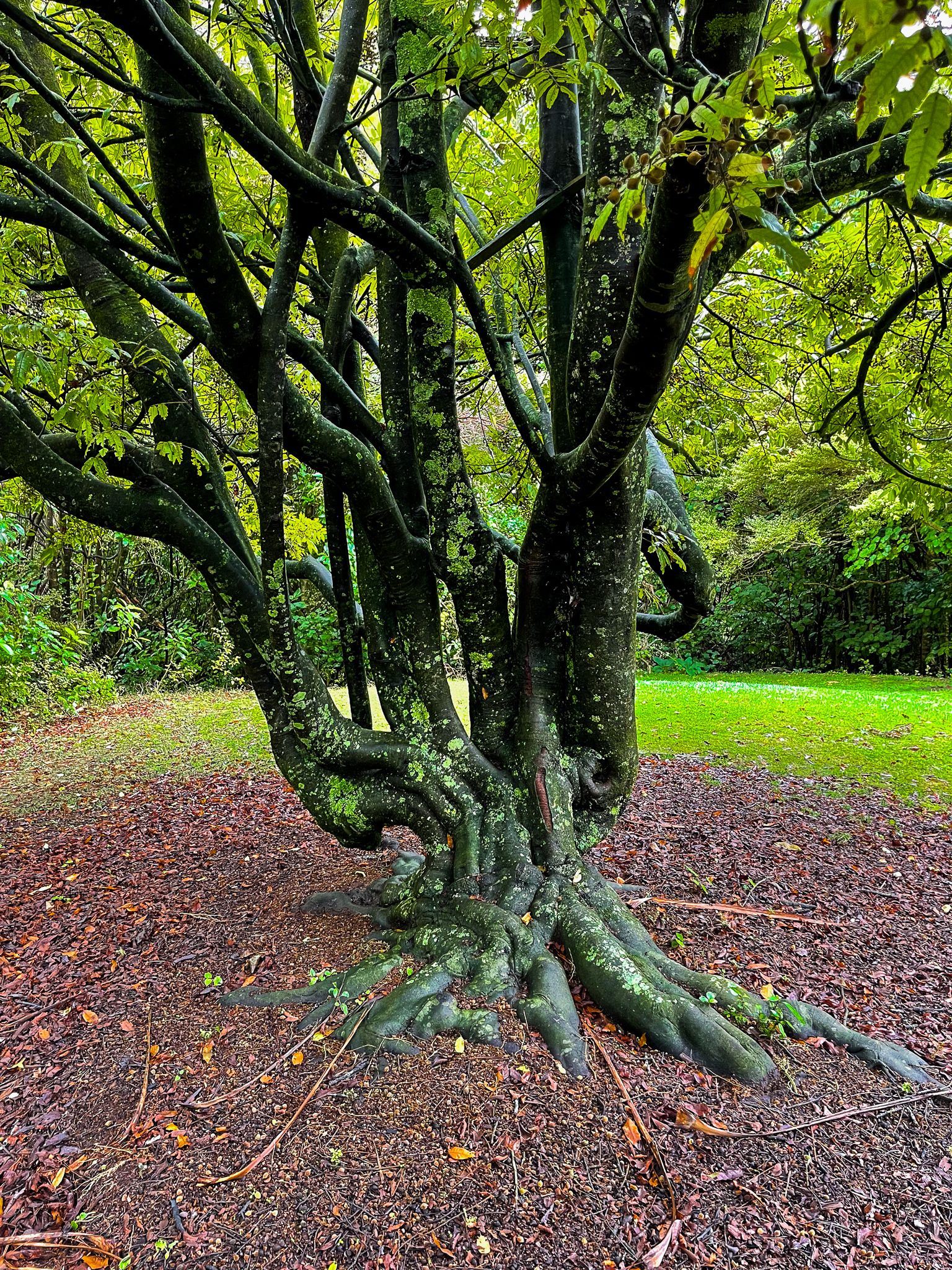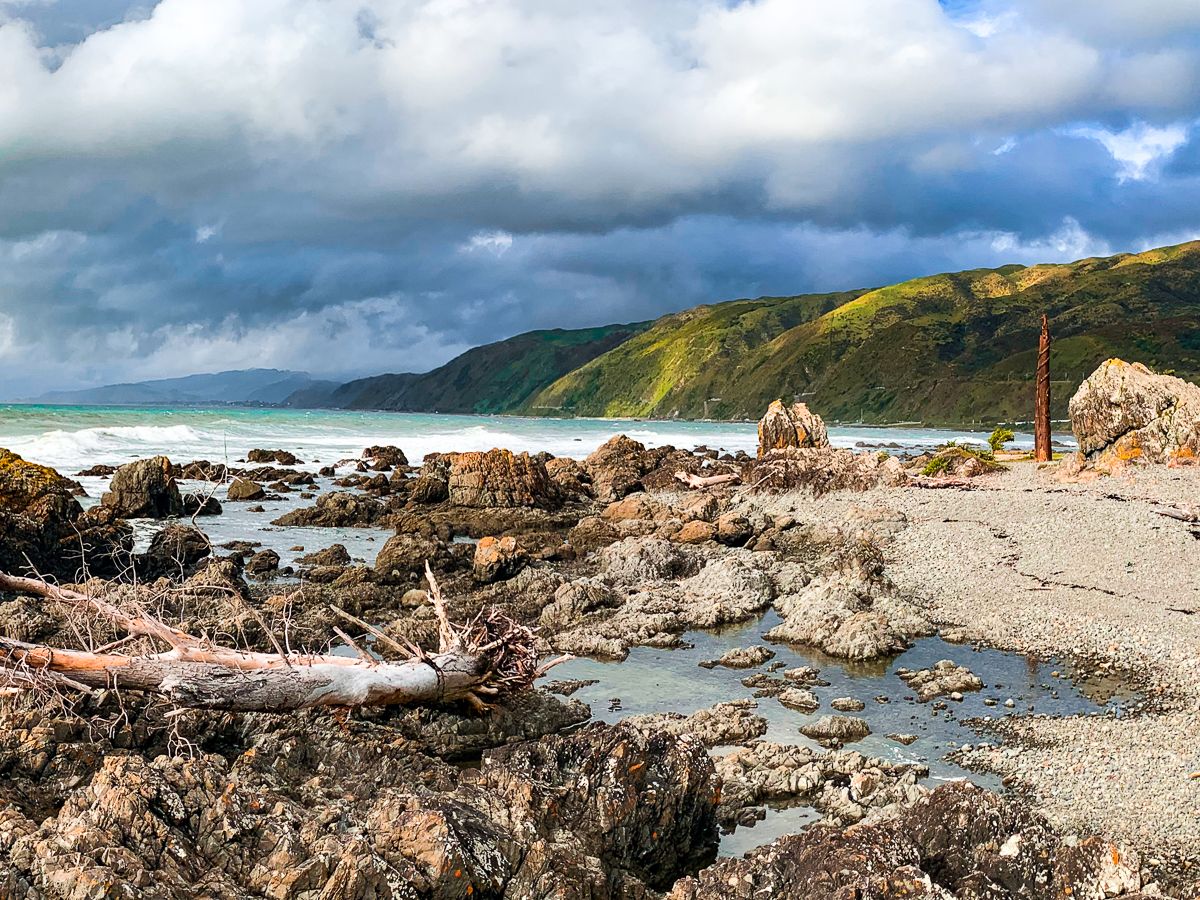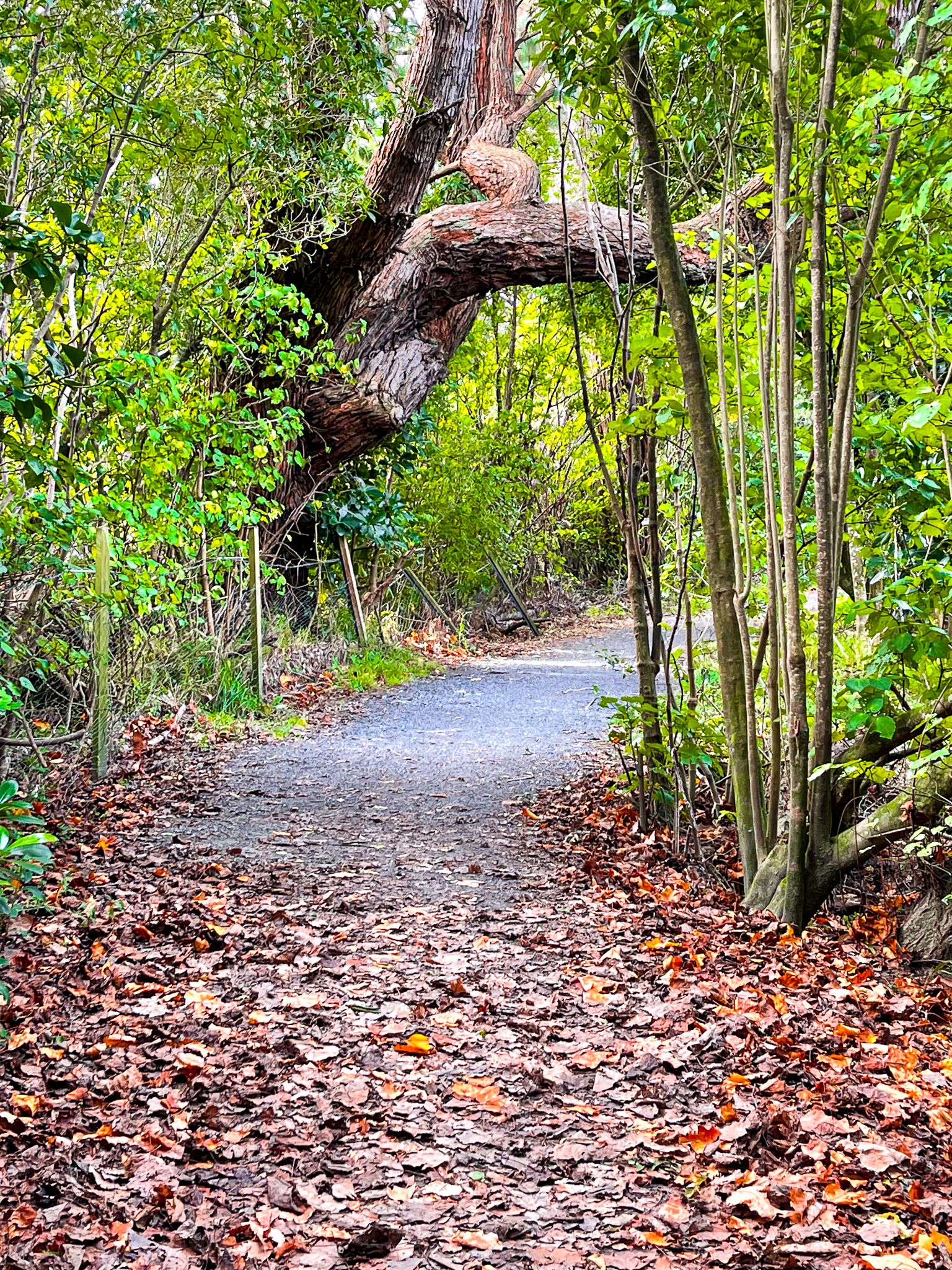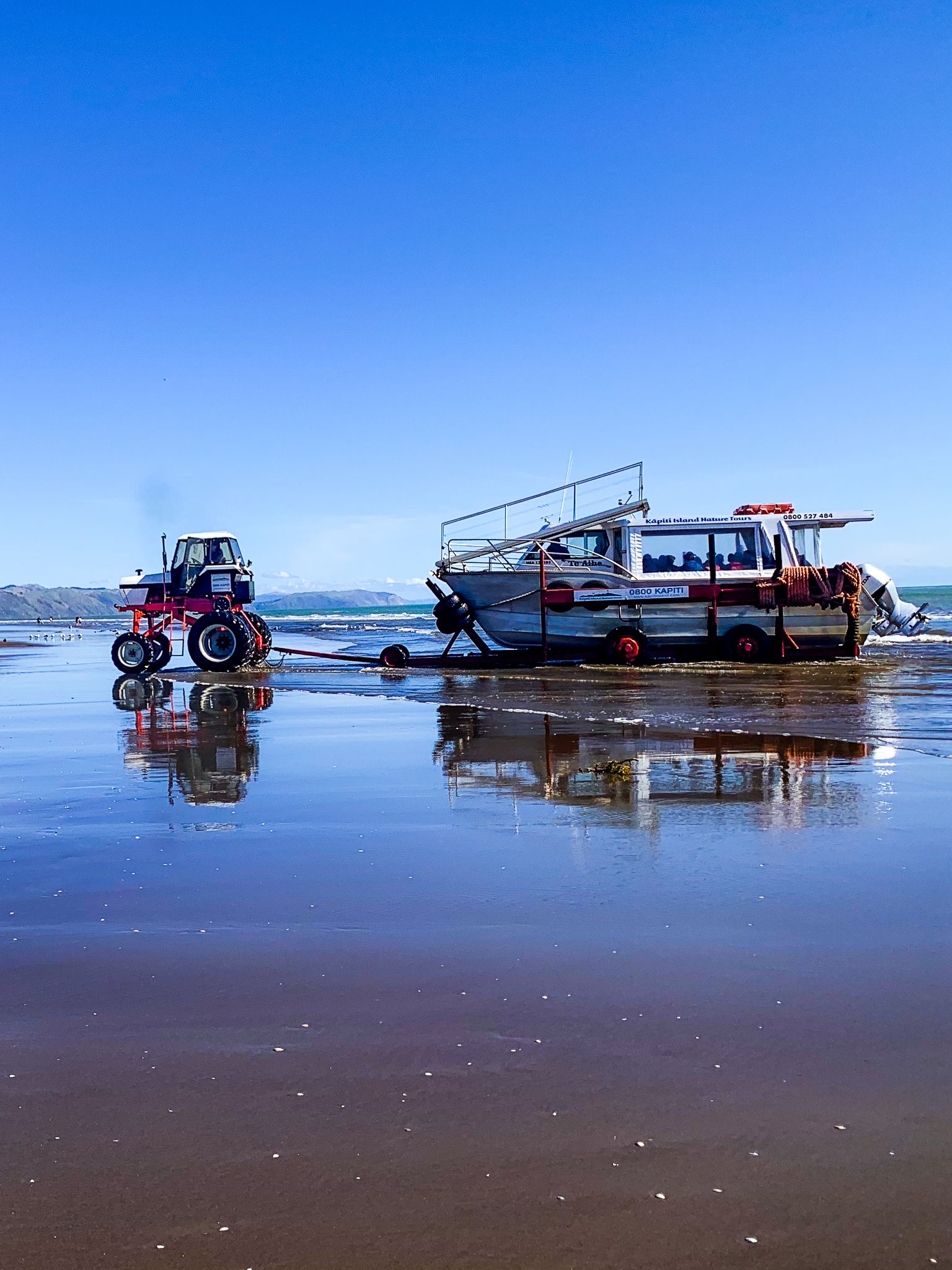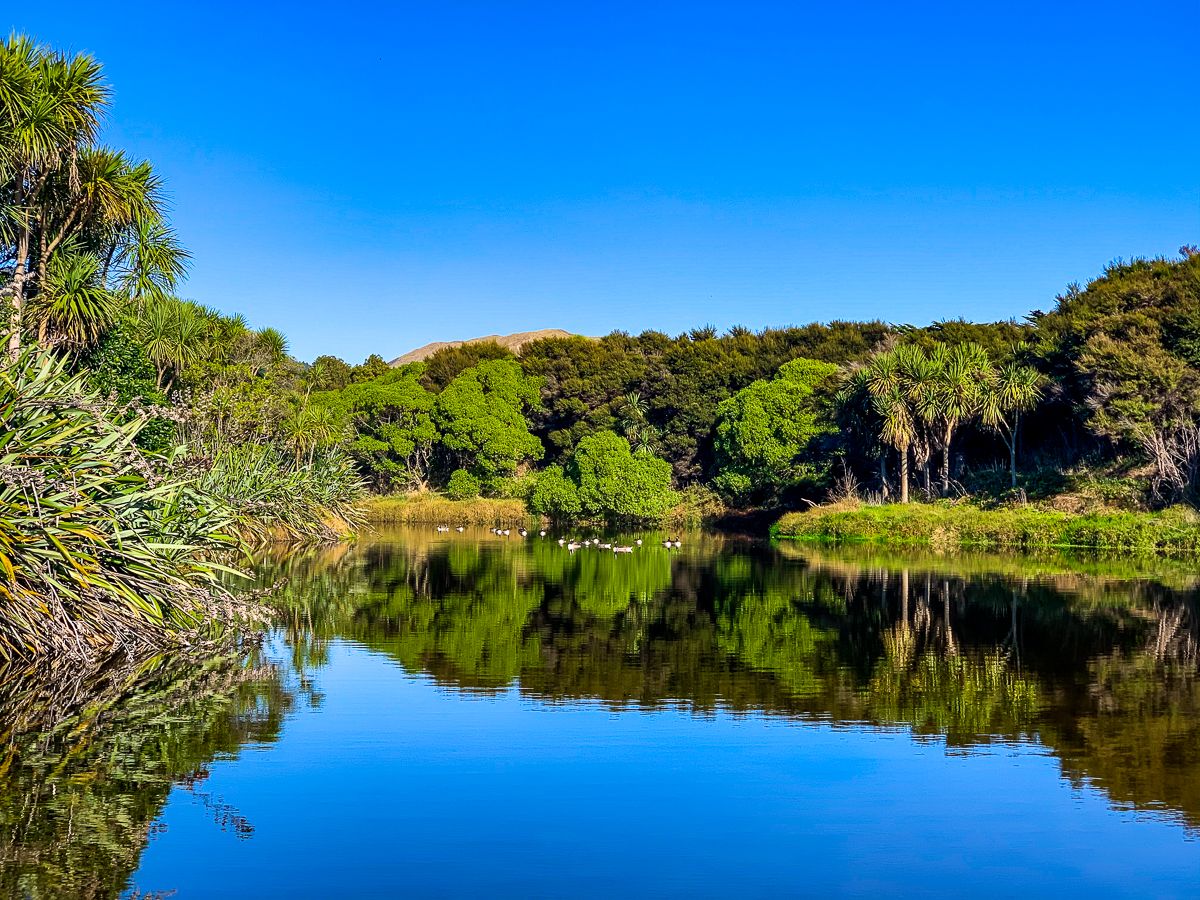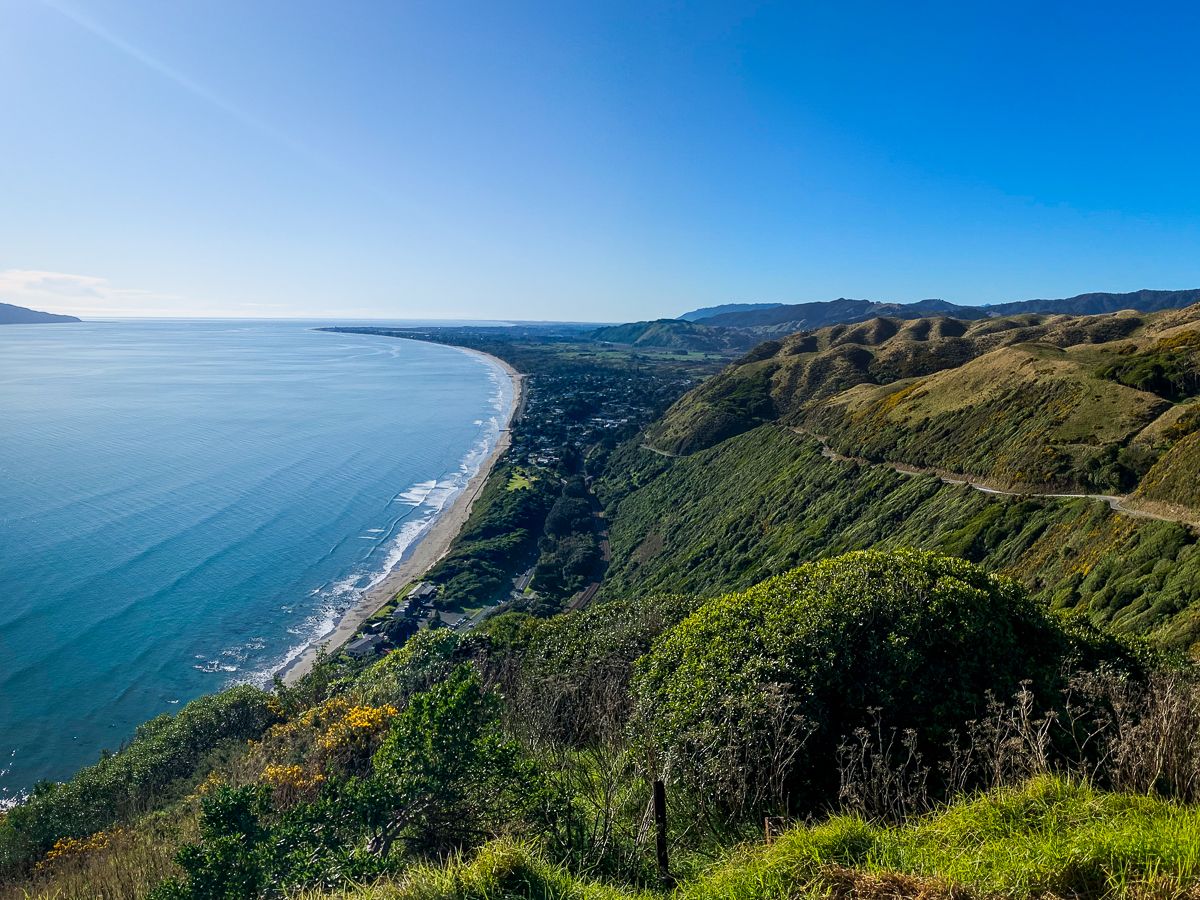Discovering Kāpiti Coast
The Kāpiti Coast stretches along the west coast of the lower North Island, running north for 60 km from Pukerua Bay to Ōtaki. Just 40 minutes by road or train from central Wellington, it offers a blend of wide beaches, forested hills, and relaxed coastal townships. With Kāpiti Island rising offshore as a landmark, the coast is both a popular holiday spot and an easy day escape from the capital.
A Coastline of Towns and Landscapes
The southern gateway at Pukerua Bay and Paekākāriki sits at the foot of the escarpment, where the railway, road, and cycleway wind north along the shore. In addition to its beach, Paekākāriki has an interesting arts centre next to its historic railway station. Raumati, Paraparaumu, and Waikanae form the heart of the district, with long, wide beaches. Access to Kāpiti Island is from Paraparaumu. These are also substantial towns with extensive services. Waikanae is further known for its river estuary, birdlife, and family-friendly beach. Further north, Te Horo and Ōtaki combine market gardens, lifestyle blocks, and wide open beaches that feel far from city life.
Walking Tracks and Scenic Viewpoints
The Kāpiti Coast is well known for its walks and cycleways. Inland, Hemi Matenga Reserve above Waikanae provides forested walking tracks and sweeping views, while Ngā Manu is home to native birds, tuatara, and wetland habitats. Nearby, the Waikanae River Track follows the river to the coast, and is popular with walkers and cyclists. At the southern end of the coast, Queen Elizabeth Park stretches between Raumati South and Paekākāriki, with dunes, wetlands, and heritage sites recalling its history as a World War II camp. Alternatively, a steep drive up Paekākāriki Hill Road leads to a spectacular viewpoint overlooking the coast and surrounding hills.
Te Araroa also runs through the area, along the Waikanae River Track, the Waikanae Estuary, Paraparaumu Beach and the superb Paekākāriki Escarpment Track. The Escarpment Track climbs high above the sea with spectacular views north to Kāpiti Island and south to Wellington.
Together, these routes showcase the varied coastal and river landscapes that define the region.
Nature, Culture, and History
Kāpiti Island, the region’s defining feature, is today a predator-free sanctuary protecting rare native birds and coastal forest. Its history, however, is also central to Māori heritage and to the story of Aotearoa. During the Musket Wars of the early 1800s, Ngāti Toa iwi under Te Rauparaha established dominance in the region, using Kāpiti Island as a stronghold. The island also became a hub for the whaling industry, bringing European settlers and lasting impacts on the local environment and communities. Trade with Europeans also provided guns to support Te Rauparaha’s campaigns throughout the lower North Island and into the South Island.
The name Kāpiti comes from Te Waewae Kāpiti o Tara rāua ko Rangitāne — the joining of the boundaries of the tribes of Tara and Rangitāne. European farming and the railway later reshaped the district, but Māori heritage remains strong, with marae, place names, and oral traditions connecting the coast to its layered past.
How to Get There
The Kāpiti Coast is easily reached by train or car from Wellington. There are Metlink train stations in each of the towns up to Waikanae, and the Wellington Motorway and Kapiti Expressway provide a fast drive north. Buses link the towns, and cycleways connect many of the beaches and rivers. Visitors often base themselves in Paraparaumu or Waikanae, using them as starting points to explore further along the coast.
